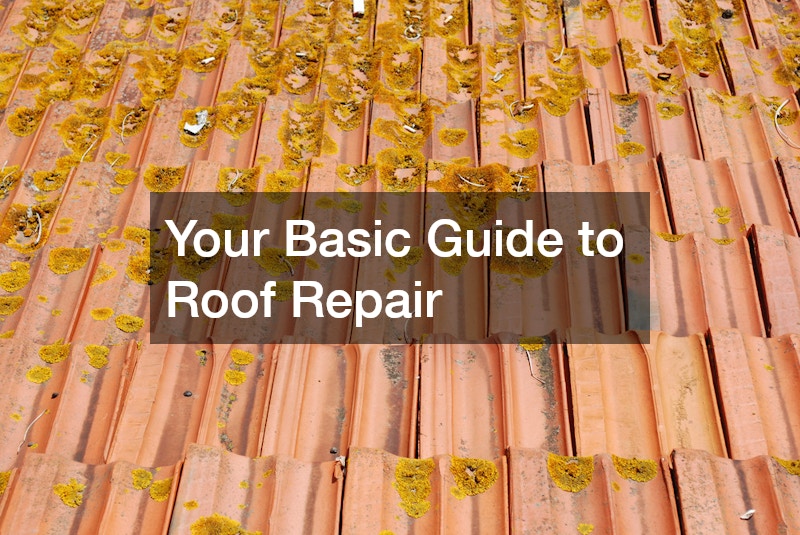Roof repair is an essential aspect of home maintenance, ensuring safety and structural integrity. This article delves into identifying roof damage, understanding repair costs, DIY approaches, selecting suitable materials, and knowing when to hire a professional.
1. Identifying Roof Damage
Identifying roof damage is crucial in preventing further deterioration. Common signs include visible damage like missing shingles and more subtle indicators such as unexplained increases in energy bills.
Leaks or water stains inside the house can also hint at roof issues, often requiring immediate action to prevent extensive damage. The presence of mold or mildew is another warning sign that suggests moisture has been allowed to seep in. Additionally, granule loss from shingles, while often overlooked, is a significant indicator of aging and wear. Regular inspections can help catch such issues early, thereby minimizing future repair costs.
Properly inspecting a roof requires the right tools and knowledge of safe techniques. Commonly used tools include binoculars for a distanced inspection and a ladder for closer examination. Safety harnesses and slip-resistant shoes are essential for those inspecting roofs firsthand. Using drones has become popular for a thorough and safer inspection, providing a detailed view without risking personal safety. The technique also matters; examining the attic for water damage or daylight peeking through is as crucial as the rooftop inspection. Consistency in inspections helps in maintaining roof integrity over time.
2. Considering the Costs Associated with Roof Repair
The cost of roof repair varies significantly based on several factors, including the extent and type of damage. Material choices, labor availability, and roof accessibility are major contributors to these costs. Local climate conditions also play a role, with adverse weather potentially leading to more frequent repairs. Each of these factors must be considered when budgeting for a roof repair project. Moreover, geographic location can impact material and labor costs due to varying local pricing structures. A thorough cost assessment helps homeowners plan financially for roof repairs.
To minimize repair costs, homeowners can implement various budget-friendly strategies. Regular maintenance and minor repairs can prevent costly extensive damage by keeping issues manageable. Purchasing materials during off-peak seasons often results in lower prices, whereas forming partnerships with local suppliers might offer discounts for regular customers. Utilizing insurance or financing options can also help manage costs. DIY repairs, if feasible, can reduce expenses significantly; however, assessing the risks involved is crucial. Overall, a strategic approach to repairs can lead to substantial savings.
3. Performing Roof Repairs Yourself
Successfully performing roof repairs yourself depends on understanding the complexity of the damage. Simple tasks, like replacing a few shingles, are typically within the reach of most homeowners. For more complicated issues, like structural damage or leaks in inaccessible areas, professional intervention is advised. Taking on challenging repairs without proper skills can exacerbate the problem. DIY repairs are ideal for minor maintenance but require an honest assessment of one’s skill level and the tools available. Consulting online resources or local experts before starting can provide clarity.
Safety is paramount when conducting any DIY roof repairs. Proper equipment like harnesses, helmets, and non-slip shoes should be used to prevent accidents. Working during dry, calm weather conditions reduces risks significantly. It is also wise to ensure someone is nearby or informed about the repair activity to provide quick assistance in case of emergencies. Finally, understanding roof layouts and accessing areas safely can prevent unnecessary injuries. Prioritizing safety not only mitigates risks but also ensures a successful repair.

4. Choosing the Right Roofing Material for Repair
When selecting roofing materials, evaluating the benefits and drawbacks of each option is essential. Asphalt shingles, for instance, are cost-effective but may not be as durable as metal roofing. Slate and tile offer longevity and aesthetic appeal; however, they are significantly heavier, requiring sturdy structural support. The material choice should balance cost, aesthetics, and lifespan. Considering regional weather conditions can also influence material selection. Certain materials perform better in specific climates, providing long-lasting protection.
Ensuring visual and structural consistency when repairing a roof is crucial for maintaining its integrity. Matching new materials with existing ones prevents leaks and offers a cohesive look. Color, texture, and thickness should be considered when selecting matching materials. Manufacturers or original suppliers might provide the exact specifications needed for a perfect match. Structural alignment is also vital; improper material fitting can lead to inefficiencies or potential vulnerabilities in the roof. Expertise from a professional or extensive research can aid in this process.
Maintaining roof health is vital for home safety, requiring regular inspections, cost understanding, and strategic repairs. Knowing when professional help is needed and selecting the right materials reinforces long-term resilience and functionality. By following these guidelines, homeowners can ensure their roofs remain durable and secure for years to come.

